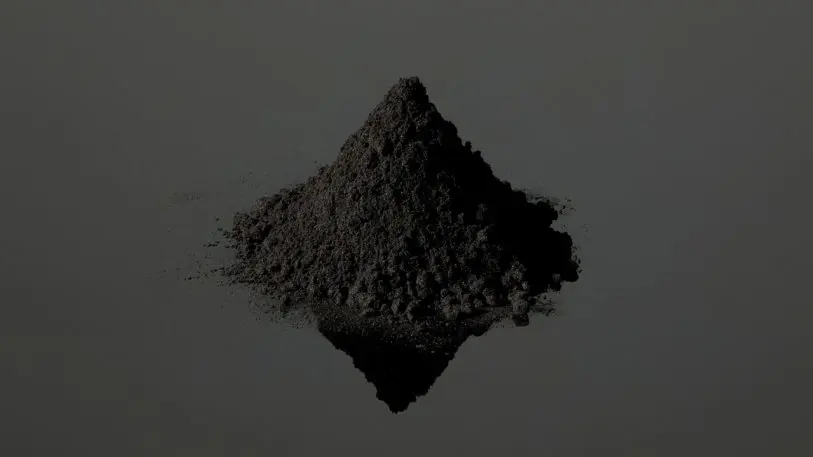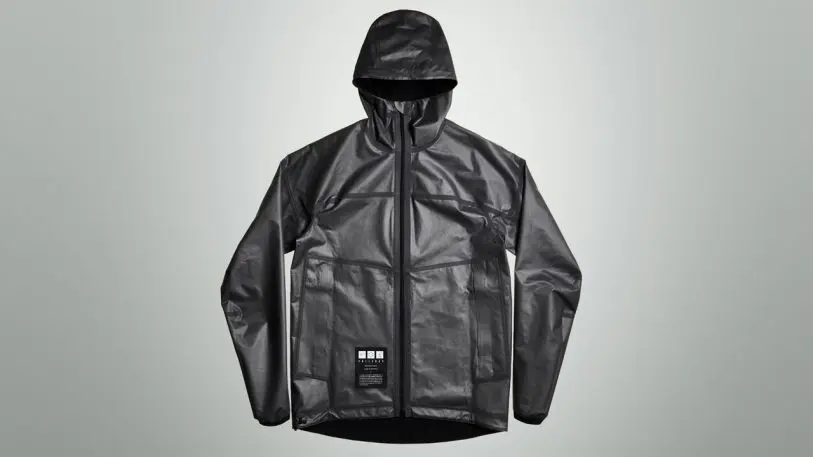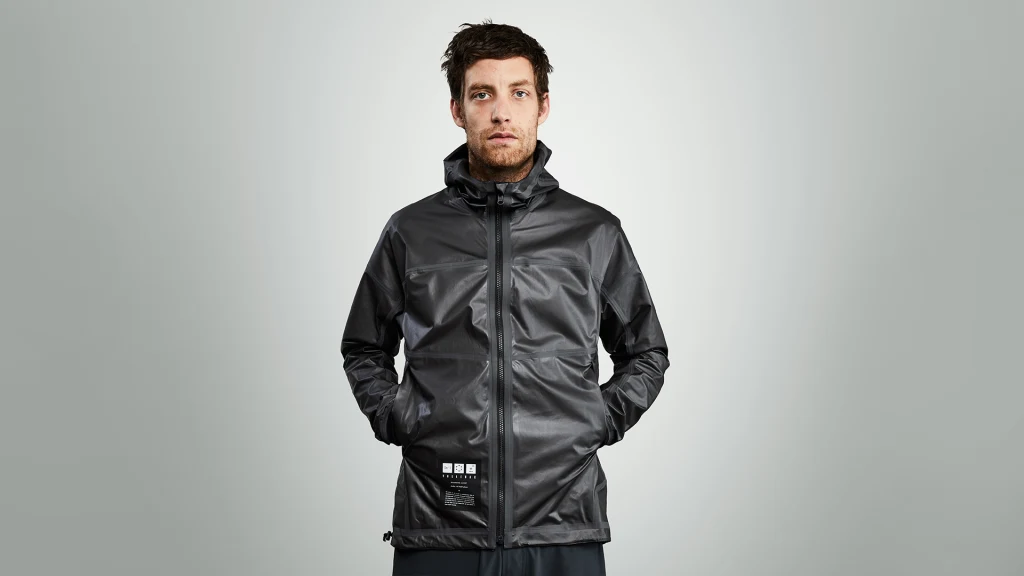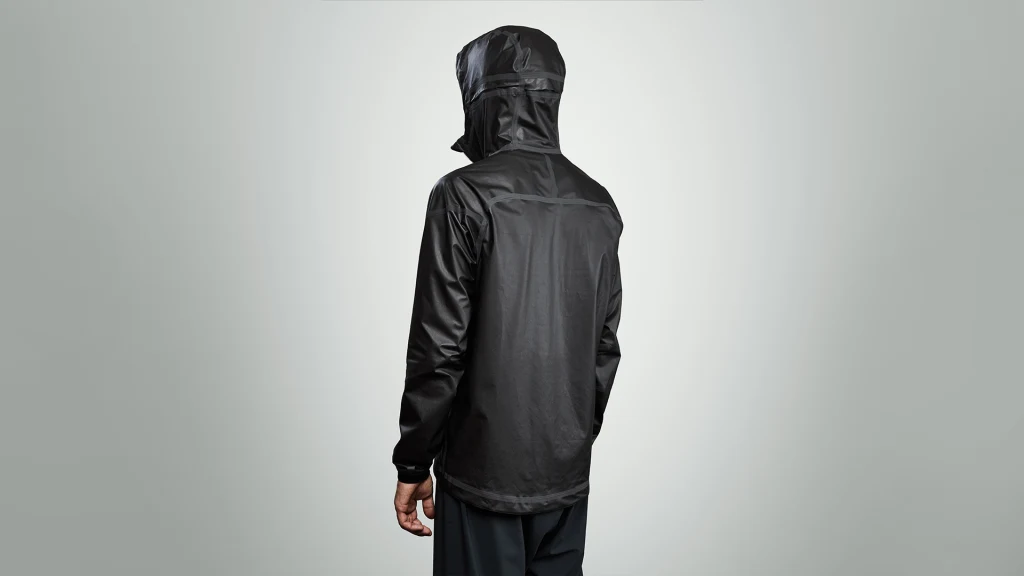At 595 euros ($695) a pop, Vollebak’s new graphene jacket isn’t for everyone. But if even half of what its creators promise is true, it could be worth every cent. According to the company, it shares many of the magical properties of graphene–absorbing heat and then warming you up over time, conducting electricity, repelling bacteria, and dissipating your body’s excess humidity. According to Vollebak, it’s the world’s first jacket made out of the notoriously difficult-to-manufacture material.

Graphene is the thinnest possible form of graphite, which you can find in your everyday pencil. It’s purely bi-dimensional, a single layer of carbon atoms that has unbelievable properties that will one day revolutionize everything from aerospace engineering to medicine. Its diverse uses are seemingly endless: It can stop a bullet if you add enough layers. It can change the color of your hair with no adverse effects. It can turn the walls of your home into a giant fire detector. “It’s so strong and so stretchy that the fibers of a spider web coated in graphene could catch a falling plane,” as Vollebak puts it in its marketing materials.
Despite its immense promise, graphene still hasn’t found much use in consumer products, thanks to the fact that it’s hard to manipulate and manufacture in industrial quantities. The process of developing Vollebak’s jacket, according to the company’s cofounders, brothers Steve and Nick Tidball, took years of intensive research, during which the company worked with the same material scientists who built Michael Phelps’ 2008 Olympic Speedo swimsuit (which was famously banned for shattering records at the event).
“[G]raphene definitely remains extremely difficult to work with, incredibly expensive to produce, and very hard to make in large quantities, so the process has not been easy,” Steve Tidball says over email. “And even two years ago this jacket would have been impossible to make in its current form.”
How they made it
The jacket is made out of a two-sided material, which the company invented during the extensive R&D process. The graphene side looks gunmetal gray, while the flipside appears matte black. To create it, the scientists turned raw graphite into something called graphene “nanoplatelets,” which are stacks of graphene that were then blended with polyurethane to create a membrane. That, in turn, is bonded to nylon to form the other side of the material, which Vollebak says alters the properties of the nylon itself. “Adding graphene to the nylon fundamentally changes its mechanical and chemical properties–a nylon fabric that couldn’t naturally conduct heat or energy, for instance, now can,” the company claims.
The company says that it’s reversible so you can enjoy graphene’s properties in different ways as the material interacts with either your skin or the world around you. “As physicists at the Max Planck Institute revealed, graphene challenges the fundamental laws of heat conduction, which means your jacket will not only conduct the heat from your body around itself to equalize your skin temperature and increase it, but the jacket can also theoretically store an unlimited amount of heat, which means it can work like a radiator,” Tidball explains.
He means it literally. You can leave the jacket out in the sun, or on another source of warmth, as it absorbs heat. Then, the company explains on its website, “If you then turn it inside out and wear the graphene next to your skin, it acts like a radiator, retaining its heat and spreading it around your body. The effect can be visibly demonstrated by placing your hand on the fabric, taking it away and then shooting the jacket with a thermal imaging camera. The heat of the handprint stays long after the hand has left.”

Vollebak also says the graphene layer will equalize your natural body temperature by redistributing heat from warm parts of your body to colder areas. The material disperses any extra humidity, too, and the jacket design itself contains no seams. Its pieces–which are laser-cut to avoid waste–are thermally sealed, instead. If moisture does end up inside, the graphene material will halt any buildup of bacteria since it can’t reproduce on its surface. In addition to being bacteriostatic, the company claims, the graphene layer is “hypoallergenic, anti-static, and certified as nontoxic.”
Oh, and it also conducts electricity, although Vollebak had to tune this power down to make it safe (no one wants to become a walking lightning rod thanks to their superconductor clothing).
Entering the carbon age
For Tidball, designing and producing the $695 jacket was just part of the challenge. “The second stage of the R&D process, and possibly even more interesting, is the one that we’re starting now,” he says. “By releasing the graphene jackets out into the world as experimental prototypes, our aim is to open up our R&D process and accelerate discovery by finally getting graphene out of the research labs and into the field.”
The hope is that once people get their hands on the jacket, they’ll start experimenting with it–like beta testers for the product and researchers for new applications. “[W]e’re looking to harness the collective power of early adopters as a test group to do it,” Tidball says. “[We] believe that between them they’re likely to discover things that we simply don’t know. It brings massive scale to our ability to experiment with the material to see what it can do.”

For example, someone could hack the conductive material to make the jacket capable of charging a phone simply by putting it in the pocket. Other new features could take advantage of the materials’ properties, too. The company hopes to learn more about its new material potential through the experimentation of its users–and then go back to the drawing table to release a new version, more akin to a hackathon than a fashion design process.
“Our view is that wearable technology will become increasingly invisible over the next 10 to 20 years,” Tidball explains. “Instead of wearing it over your eyes or on your wrist, it will be embedded as clothing and tech simply merge. We think graphene’s ability to conduct heat and power and withstand insane forces, while adding zero mass, should make it central to the story. And when clothing can start conducting heat and electricity all sorts of cool things can start happening. It means that over the next decade your clothing can start to become a platform for other innovations. And that’s really what we’re interested in.”
It’s telling that Vollebak took inspiration from the very first Apple computer–a motherboard that computer enthusiasts had to put into a case and connect to a monitor on their own. “The fact it now looks like a 19th-century artifact shows that all tech has to start somewhere,” Tidball says. “In tech, you can either be early or late. We decided to be early.”
Recognize your brand’s excellence by applying to this year’s Brands That Matter Awards before the early-rate deadline, May 3.






